Search results for 'layers'
-

London Pigment, Verdigris Ink, 20 ml
£12.50Ink made from pure copper metal leaf that has reacted with distilled vinegar. Learn More -
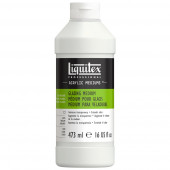
Liquitex Acrylic Glazing Medium
Starting at: £20.40
Creates brilliant glazes when mixed with transparent colour. Excellent brushing and self-leveling qualities. Dries quickly for rapid layering. Learn More -
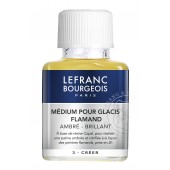
Lefranc Flemish Glazing Medium
Starting at: £9.10
Lefranc Bourgeois are a paint manufacturer with a long history of supplying to artists since their beginnings in 1720.
From their website: The Flemish glazing medium enables artists to create glossy amber finishes in the style of the Flemish masters. It creates a transparent look. It also greatly enhances the brilliance of the oil. After half a day’s work, the colours can be layered over each other.
Learn More -
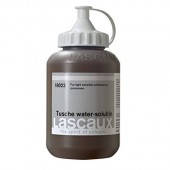
Lascaux Tusche Water-Soluble
£39.90This viscous tusche can be painted in a smooth even layer which can be scratched away to create delicate non-printing lines. It can also be used for a broad range of painted marks, offsetting and pattern-making. The diluted tusche dries to create granular washes that are full of character. Dry marks can be re-wet and altered if required. 500ml. Learn More -
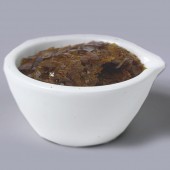
Lemon Shellac
Starting at: £8.20
Shellac is a natural resin that is deposited by the female lac insect on the branches of trees in India and Thailand. It is soluble with alcohol, but not with mineral spirits or turpentine. It forms a tough yet flexible film, with many applications. It is suitable as a top coat for gilding when applied thinly, a sealant for porous surfaces, an isolating layer for tempera paintings, a base for pigmented inks, a protective layer for collograph plates, and a warm varnish for wooden floors and furniture. As it is prone to darkening with age, it is not recommended as a varnish for oils, and its solubility can reduce over time. There are various grades of shellac. When mixed with alcohol, it may initially form a cloudy mixture, due to traces of wax in the shellac, but this should become clear once it has dried. The highest grades of shellac are Clear Dewaxed Shellac, which has been de-coloured using the carbon filtering method, Lemon Shellac, and Orange Shellac, which are pale in colour. Button Shellac is less refined and therefore produces a reddish varnish. It was, in fact, widely used as a red dye before synthetic dyes became available. Learn More -
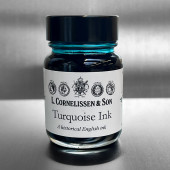
Cornelissen Historical Inks, Turquoise
£6.50This turquoise ink is a beautiful, transparent, deep blue-green. It can be layered for deeper shades; when used at full opacity it is a deep viridian green, and when diluted with water it reveals a marked blue undertone. Made from a blend of botanical dyes, this ink is not fully lightfast.
Not suitable for fountain pens. Learn More -
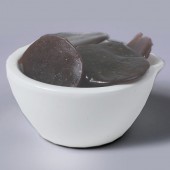
Button Shellac
Starting at: £8.40
Shellac is a natural resin that is deposited by the female lac insect on the branches of trees in India and Thailand. It is soluble with alcohol, but not with mineral spirits or turpentine. It forms a tough yet flexible film, with many applications. It is suitable as a top coat for gilding when applied thinly, a sealant for porous surfaces, an isolating layer for tempera paintings, a base for pigmented inks, a protective layer for collograph plates, and a warm varnish for wooden floors and furniture. As it is prone to darkening with age, it is not recommended as a varnish for oils, and its solubility can reduce over time. There are various grades of shellac. When mixed with alcohol, it may initially form a cloudy mixture, due to traces of wax in the shellac, but this should become clear once it has dried. The highest grades of shellac are Clear Dewaxed Shellac, which has been de-coloured using the carbon filtering method, Lemon Shellac, and Orange Shellac, which are pale in colour. Button Shellac is less refined and therefore produces a reddish varnish. It was, in fact, widely used as a red dye before synthetic dyes became available. Learn More -
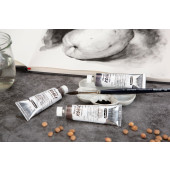
Schmincke Liquid Charcoal 15 ml
Starting at: £18.30
Liquid charcoal in the 15 ml tube - a clean, dust-free way of painting, charcoal drawing and underpainting with charcoal. The three pigments of natural origin used for this (PBK 8, pit black) are created by charring fruit seeds from the EU area and result in the following unique coal nuances: a neutral peach stone black - 18 757 a warm, brownish cherry pit black - 18 756 a cool, bluish grape seed black - 18 755 Due to the larger quantity of available paint, liquid charcoal can be used to quickly process large areas. The liquid charcoal contains the high-quality binder gum Arabic like traditional artists' watercolours (gouaches, watercolours, etc.), has a gouache-like consistency and can be diluted with water, so that different shades, structures and layer thicknesses can be achieved by different application. Depending on the substrate and the thickness of the layer, it can be wiped off by hand and removed with water. Used as thin underpainting (e.g. in oil painting), subsequent paints do not become dirty or become less dirty than with conventional charcoal underpainting due to the higher adhesion of the bound carbon pigments to the substrate. Of course, the liquid charcoal can be combined with drawing charcoal. The blurring and removability of the liquid charcoal depends on the surface of the substrate - the more even and firm the surface, the easier to change the application. Pre-tests are recommended. Learn More -
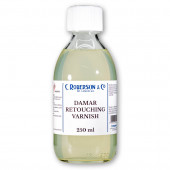
Roberson Retouching Varnish
Starting at: £8.20
Damar resin/white spirit. Rectifies dull areas caused by sinking of paint. Also helps adhesion of succeeding layer. Finish between matt and satin. Unable to send overseas. Learn More -
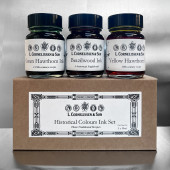
Cornelissen Historical Colours Ink Set
£18.50Three historical coloured inks, handmade to traditional recipes. 3 x 30 ml high quality glass bottle with black plastic lid. Green Hawthorn Ink. Brazilwood Ink. Yellow Hawthorn Ink. Learn More -
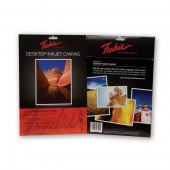
Fredrix Inkjet Canvas Pack
Starting at: £16.90
Call to Order
340GSM, A4, 10 Sheets, Poly-Cotton Blend. Learn More -
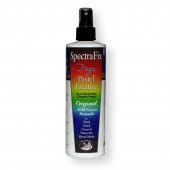
Spectrafix 360ml
£25.95Spectrafix 360ml. A natural non-toxic milk casein fixative based on an antique recipe used by Degas himself. This is the perfect fixative for pastel, charcoal, gouache and watercolour. Its workable matt finish allows deep layering with minimal colour shift. Learn More -
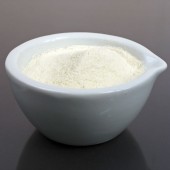
Gum Sandarac
Starting at: £8.60
Gum Sandarac, derived from a coniferous tree, is available in powdered or lump form. It can be dissolved in alcohol to create a varnish that is suitable as an isolating layer in oil painting and as a traditional top coat for egg tempera. It forms a brittle layer, so is only suitable for use on a rigid support. Another application is as a surface preparation for calligraphy; the ground gum can be dusted across a piece of prepared vellum or paper to create a resist, which shrinks ink strokes slightly, making them appear finer, with crisp edges. Learn More -
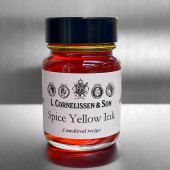
Cornelissen Historical Inks, Spice Yellow Ink 30ml
£6.50A luscious sunshine yellow that can be layered to produce deeper shades. As a blend of organic dyes derived from saffron and turmeric, this ink is not fully lightfast. Unlike other inks in this range, it has a granulating texture that displays the individual colour particles.
Learn More -
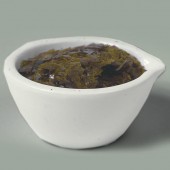
Clear Dewaxed Shellac
Starting at: £9.20
Shellac is a natural resin that is deposited by the female lac insect on the branches of trees in India and Thailand. It is soluble with alcohol, but not with mineral spirits or turpentine. It forms a tough yet flexible film, with many applications. It is suitable as a top coat for gilding when applied thinly, a sealant for porous surfaces, an isolating layer for tempera paintings, a base for pigmented inks, a protective layer for collograph plates, and a warm varnish for wooden floors and furniture. As it is prone to darkening with age, it is not recommended as a varnish for oils, and its solubility can reduce over time. There are various grades of shellac. When mixed with alcohol, it may initially form a cloudy mixture, due to traces of wax in the shellac, but this should become clear once it has dried. The highest grades of shellac are Clear Dewaxed Shellac, which has been de-coloured using the carbon filtering method, Lemon Shellac, and Orange Shellac, which are pale in colour. Button Shellac is less refined and therefore produces a reddish varnish. It was, in fact, widely used as a red dye before synthetic dyes became available. Learn More -
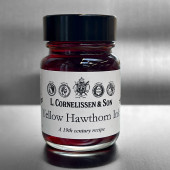
Cornelissen Historical Inks, Yellow Hawthorn Ink 30ml
£6.50Made from organic hawthorn berries collected from Cambridgeshire, this bright, warm yellow ink can be layered in order to produce deeper shades. It is not fully lightfast or waterproof due to the presence of organic materials.
Not suitable for fountain pens. Learn More -
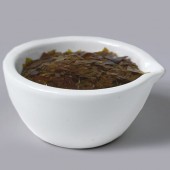
Orange Shellac
Starting at: £8.00
Shellac is a natural resin that is deposited by the female lac insect on the branches of trees in India and Thailand. It is soluble with alcohol, but not with mineral spirits or turpentine. It forms a tough yet flexible film, with many applications. It is suitable as a top coat for gilding when applied thinly, a sealant for porous surfaces, an isolating layer for tempera paintings, a base for pigmented inks, a protective layer for collograph plates, and a warm varnish for wooden floors and furniture. As it is prone to darkening with age, it is not recommended as a varnish for oils, and its solubility can reduce over time. There are various grades of shellac. When mixed with alcohol, it may initially form a cloudy mixture, due to traces of wax in the shellac, but this should become clear once it has dried. The highest grades of shellac are Clear Dewaxed Shellac, which has been de-coloured using the carbon filtering method, Lemon Shellac, and Orange Shellac, which are pale in colour. Button Shellac is less refined and therefore produces a reddish varnish. It was, in fact, widely used as a red dye before synthetic dyes became available. Learn More -

Roberson Poppy Oil
Starting at: £10.20
Poppy Oil is a slightly later addition to the artist's cabinet than Linseed Oil and Walnut Oil. It is generally used as a binder for pale colours, where the warmth of Linseed Oil is not desired. It provides a matte finish and dries very slowly, so we would not advise using it in conjunction with slow-drying pigments or in underpaintings. A paint film produced by Poppy Oil is weaker and softer than that created by Linseed Oil. This is because it contains a smaller percentage of linolenic acid than Linseed Oil; this substance imparts both strength and yellowness to an oil.
Although some of these properties can be perceived as drawbacks, paints made with Poppy Oil generally obtain a "short" or buttery texture without the addition of waxes or other additives, which can be an advantage for certain colours that produce poor consistencies in Linseed oil alone. Sometimes, the addition of a small quantity of Poppy Oil when grinding a tricky or "stringy" pigment in Cold Pressed Linseed Oil can introduce some of benefits of Poppy Oil, without transmitting its negative characteristics.
Paints made with Poppy Oil are particularly suited to "alla prima" working methods, where paint is applied spontaneously. When working in successive layers, Poppy Oil would only be appropriate for the final stages of a painting.
Learn More -
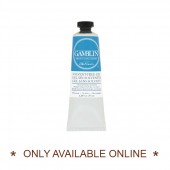
Gamblin Solvent-Free Gel
Starting at: £6.80
Gamblin Solvent-Free Gel is manufactured by the American company Gamblin. They write:
"Gamblin Solvent-Free Gel is the only solvent-free painting medium that supports a broad range of painting techniques with minimal compromise. Solvent-Free Gel gives colours more flow and transparency, yet holds the shape of your brushmark. Solvent-Free Gel has a moderately fast drying rate and increases gloss. Made from safflower oil and alkyd resin, Gamblin Solvent-Free Gel is non-toxic and contains no Gamsol or petroleum distillates. In comparison to other solvent-free mediums, Gamblin Solvent-Free Gel supports the broadest range of painting techniques with the least compromise across color, dry time, texture and mark-making. To ensure proper drying of paint layers, Solvent-Free Gel should be used in moderation with oil colors. No more than 25% by volume. To avoid wrinkling, apply mixtures of Solvent-Free Gel and oil colors thinly. To paint solvent-free, we recommend Gamblin Safflower Oil for cleaning brushes while you are working. After your painting session, brushes can be further cleaned using Gamsol and/or soap and water."
Learn More -
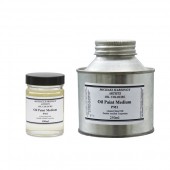
Michael Harding Oil Paint Medium PM1
Starting at: £9.95
PM1 is a basic paint medium, designed to increase the flow of your oil paints and the gloss and transparency of your paint layers, adding to the depth and beauty of the your pigment colour. The inclusion of linseed stand oil in the recipe of this oil based medium prevents the “yellowing” of your paint film.
Recommendation: Add 10-20% to your oil colour as you require.
Learn More -
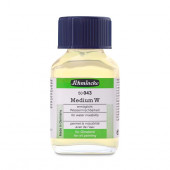
Schmincke Medium W
Starting at: £9.60
Schmincke Medium W is an odourless, jelly-like ("lean") medium for mixing oil colours with water instead of organic solvents such as turpentine or turpentine substitute. It increases gloss and transparency, reduces viscosity and harmonizes the drying process.
Dosage: 50%
Thinner: Water
Learn More -
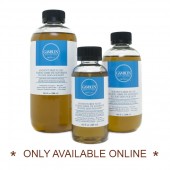
Gamblin Solvent-Free Fluid Medium
Starting at: £12.60
Gamblin Solvent-Free Fluid is an oil painting medium created by the American company Gamblin. They write:
"Gamblin Solvent-Free Fluid painting medium gives oil colours more flow and transparency. It has a moderately fast drying rate and increases gloss. Made from safflower oil and alkyd resin, Gamblin Solvent-Free Fluid is non-toxic and contains no Gamsol or petroleum distillates. To ensure proper drying and prevent beading-up of paint layers, Solvent-Free Fluid should be used in moderation with oil colours – no more than 25% by volume. To avoid wrinkling, apply mixtures of Solvent-Free Fluid and oil colors thinly. For underpainting, we recommend adding Gamsol to Solvent-Free Fluid."
Learn More -
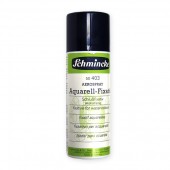
Schmincke Watercolour Fixative
Starting at: £17.20
Final fixative for watercolours. No colour changes when applied in thin layers. May increase transparency of paper. Unable to send overseas. Learn More -
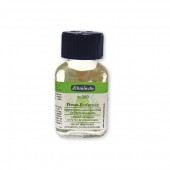
Schmincke Varnish Remover
Starting at: £9.45
Varnish remover. For softening old varnish and colour layers. Strong solvent should be used by experienced persons only. Learn More -
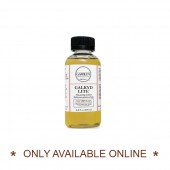
Gamblin Galkyd Lite Medium
Starting at: £12.60
Galkyd Light is produced by Gamblin. They write:
"Galkyd Lite thins oil colours and increases transparency and gloss. When used in moderation with oil colours, Galkyd Lite will retain brushstrokes. Galkyd Lite is more fluid and less glossy compared to Galkyd. Thin layers will be touch-dry in 24 to 30 hours."
Learn More -
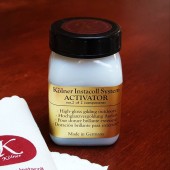
Instacoll Gilding System
Starting at: £6.85
Kölner Instacoll is a two-part system, consisting of a base coat and activator, that can be used on nearly all suitably prepared substrates to create weather-resistant, high gloss interior and exterior gilded surfaces. The Instacoll Tool is a double-ended tool with shaped tips made of elastic rubber, designed for pressing gold and silver transfer leaf into indentations when gilding uneven surfaces. The Instacoll Chiffonnette is an extra soft, lint-free cloth, used for polishing and burnishing surfaces gilded with Instacoll. *PLEASE NOTE - COLOURS OF THESE PRODUCTS MAY VARY SLIGHTLY FROM PRODUCTS PICTURED* Learn More -
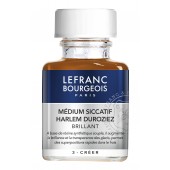
Lefranc Harlem Duroziez Drying Medium
Starting at: £9.10
Lefranc Bourgeois are a paint manufacturer with a long history of supplying to artists since their beginnings in 1720.
From their website: The Harlem Duroziez drying medium increases the brilliance and transparency of glazes. It enables the build-up of layers over the course of half a day thanks to the rapid drying effect of thin layers. It is completely dry within three days.
Learn More -
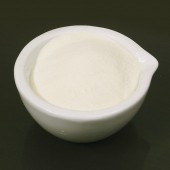
Casein Lactic
Starting at: £15.95
Casein is a protein derived from dried milk, which has been used in painting since ancient times. It can be combined with Ammonium Carbonate to form an emulsion, which acts as a durable, non-resoluble binder for pigments, producing a matte, fast-drying paint, similar in appearance to egg tempera. We use casein as a binder for our L. Cornelissen & Son Pigment Colour Charts, as it is a medium that clearly showcases the characteristics and behaviour of each pigment in its pure form. Casein paints can be applied in thin layers to watercolour paper, but would require a more rigid support, such as a gesso panel, to be applied thickly, as the comparative inflexibility of the paint layer means that it can be prone to cracking. Subsequent layers of paint should be more diluted to aid adhesion, and impasto effects are not recommended. It is possible to varnish casein paintings using an acrylic or damar varnish to obtain a glossy surface if desired, although this is not a necessary step. Casein can also be used as an ingredient in gesso, and is a suitable binder for fresco secco techniques.
Some pigments may require a wetting agent in order to fully disperse within the binder, in which case alcohol may be used.
Learn More -
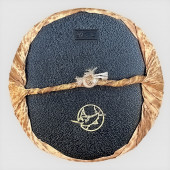
Traditional Sumi Baren
£46.50Traditional Japanese "ba-ren" is the pressing and rubbing tool for printing. The inner coil or "shin" consists of flat strips of bamboo twisted together into strands and then into a long cord. The cord is then coiled onto a backing disk made from either layers of washi paper, carved wood or plastic. Finally a bamboo sheath or "takenokawa" is used as a covering, with rubbing surface for printing one side and a twisted handle for the artist to hold on the other. Over time the outer sheath may need replacing due to wear and friction of printing. Our "sumi" baren is made in the traditional way with a plastic backing disk and has a finer coil. It is 130mm across and is suitable for printing the "key block" and fine details. This baren comes in a presentation box. Replacement bamboo sheaths are available to order specially. Learn More -
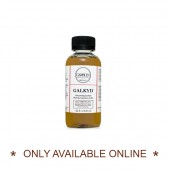
Gamblin Galkyd Medium
Starting at: £12.60
Galkyd is an oil painting medium created by Gamblin. They write:
"Galkyd thins oil colours and increases transparency and gloss. When used in greater proportions with oil colour, Galkyd will level brush-strokes, creating an enamel-like surface. Galkyd is our fastest-drying painting medium. Thin layers will be touch-dry in approximately 24 hours."
Learn More




